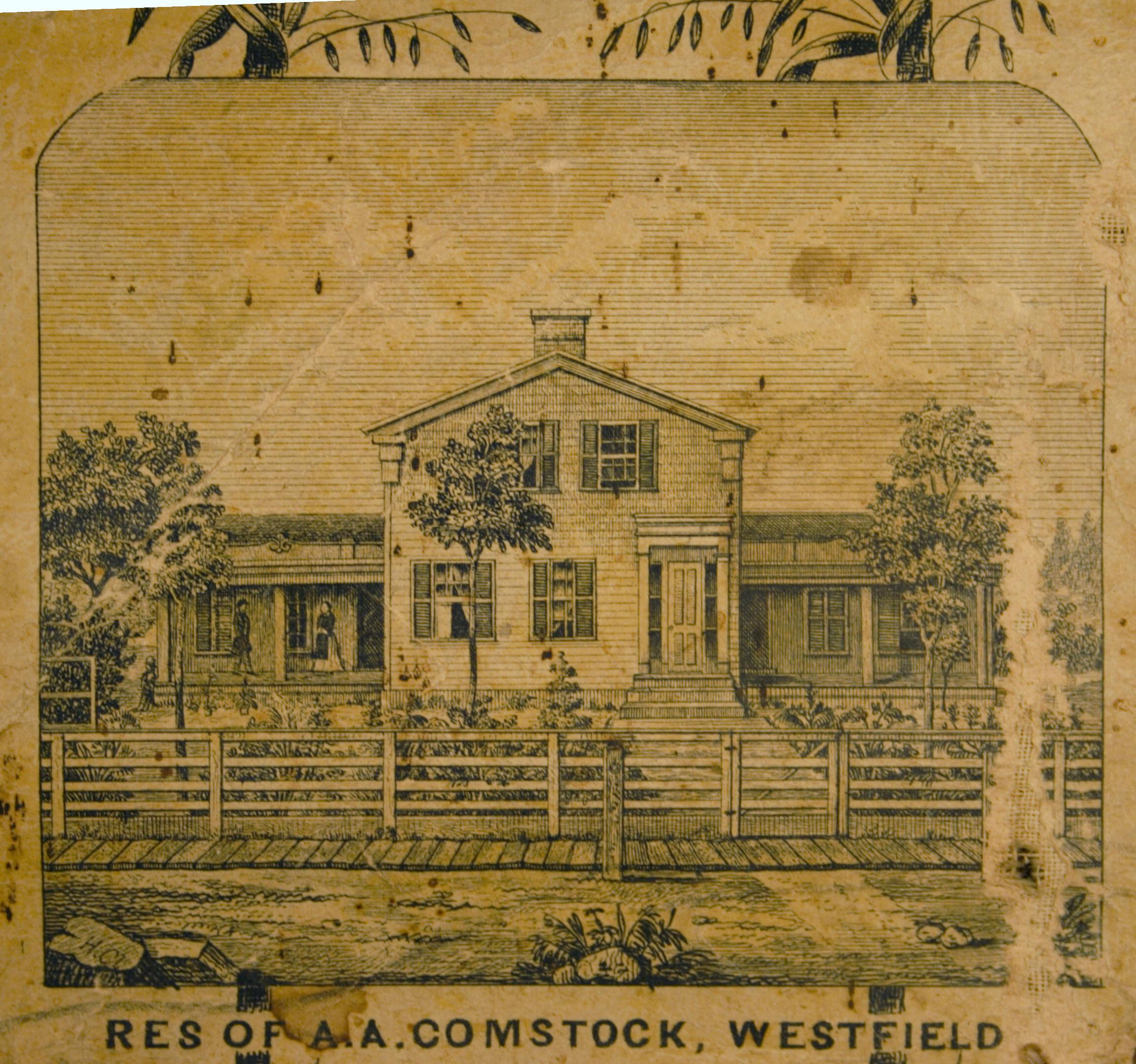The Haskells settled in Chautauqua County in western New York
When we last left Captain George Henry Haskell, he had mustered out of the Massachusetts Militia after the defense of Portland in the War of 1812. He returned to his third wife, Eliza Knapp, in Middlebury, Vermont, right around the time she gave birth to fraternal twins in October 1814. These were his first children with Eliza, joining four older children from Elizabeth Howe.
A quick aside here about the settlement period in Vermont by New England families, the Captain having come from Oakham, Mass., outside Worchester, and originally from Plymouth Colony before the American Revolution. Just as with the western lands, both Connecticut and Massachusetts laid claim to Vermont, as did New Hampshire and New York as well. All of that was worked out in 1791, when Vermont was admitted as the 14th state, but in the meantime settlers from those other places had been steadily populating the state.
We'll see that some of our Connecticut ancestors that ended in Ohio, specifically the Bradley branch, first went to Vermont. And here we see the Haskell branch moving from Massachusetts to a succession of small Vermont towns before ending in Middlebury.
Eliza had a third child, Charles, in 1815, and we don't know for sure his place of birth, but I think it is still in Middlebury. (He is the one who later drowns in an Iowa flood.) Then there is a gap in childbirths until 1820, after which there will be nine more children, all but the last born in the town of Mina in Chautauqua County, New York.
Why did the Haskells go there? Just as the lands in the nearby Ohio Western Reserve were sold to land speculators for real estate development, the vast area of western New York state around the two Great Lakes was sold in 1892 to Dutch economic interests operating as the Holland Land Company. The company did not have clear title to the land, however, because elements of the old Iroquois Five Nations, specifically the Seneca, still lived and hunted on the lands.
In 1897, the Treaty of Big Tree settled the Indian claims and established a series of small reservations throughout the region. The rest of the territory, comprising most of eight present-day counties including the city of Buffalo, was now open for development and land sales.
Chautauqua is the westernmost of the counties, abutting the north-south border of the Pennsylvania notch. Its most prominent feature, besides Lake Erie itself, is the 17-mile-long Chautauqua Lake, sometimes called "the thumb of the Finger Lakes." The famous Chautauqua Institution would be established on its shores in 1874.
Heading west from the lake about 15 miles, to the south of modern-day I-86, you enter into Mina Township and then the small town of Mina. Farther along is Findley Lake, where the actual Mina town government is centered. The whole region is a part of the French Creek river basin, a tributary of the Allegheny River.
It was here, near the crossroads at Mina, that George Henry Haskell relocated his growing family sometime between 1815 and 1820. According to a study of Holland Land Company sales in Chautauqua County, "Land sold for $2.25 and $2.50 an acre; village lots in Mayville, Cattaraugus Village (present-day Irving) sold for $5 an acre. A very few cleared lots in a village sold for $10 an acre."
Here is a source about how settlers typically were able to finance the property purchase.
Few settlers were able to purchase land outright. - they would instead "take an article" which meant making a small downpayment and signing a contract to work at clearing and improving the land. Often a settler was not able to meet the terms of the "article" and the Holland Land Company would "re-article" the partially improved land to someone else. The length of many of the contracts was ten years. Thus many successful settlers had been on the land with buildings built and lived-in years before they ever received a deed to the property. Other settlers who cleared land and built buildings never obtained a deed.
We don't know if Captain George Haskell bought on credit and sweat equity like this, or if he was able to pay, say, $250 outright for 100 acres of timberland near Mina. We know that he worked the land and stayed in Mina for 12 years or more, before he sold out and moved 100 mile further west to Trumbull County, Ohio.
George was not the only Haskell in Mina. His younger brother Roger Haskell Jr. also arrived there around 1820 from Vermont with a wife and four children. Presumably the two brothers homesteaded on adjacent properties. When George moved on, Roger remained in Mina until his death in 1843. His son Hartwell Haskell died there in 1874, and I see that there were a lot more Haskell descendants in Mina and Finley Lake well into the 20th century.
So even though our direct Haskell relations were only proverbially passing through Chautauqua on their way further west, the family sunk deep roots there on the old Holland Purchase.

